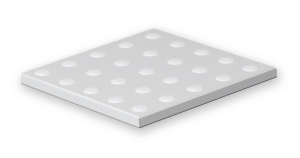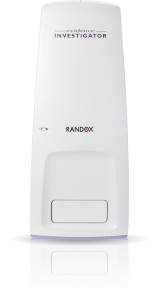Multiplex Detection of Acute Kidney Injury from a Single Sample
Acute kidney injury (AKI) is currently diagnosed using serum creatinine as recommended by the KDIGO guidelines. Serum creatinine however, has poor sensitivity and specificity for AKI lagging behind both renal injury and recovery. There is an immediate need for more sensitive biomarkers to enables earlier identification of AKI, monitor drug toxicity and identify patients at an increased risk of CKD, end-stage renal disease or long-term kidney dialysis.
The National Institute for Health and Care Excellence (NICE) has highlighted that is important that patients are assessed for AKI on admission to hospital or transfer, monitored for AKI throughout their stay and AKI is managed appropriately if it develops.
Utilising patented Biochip Technology, the Randox Acute Kidney Injury (AKI) array simultaneously tests for four novel biomarkers delivering early diagnosis and monitoring of treatment efficacy It may also help you conduct safer and faster clinical trials.

Randox Acute Kidney Injury (AKI) Array (4-plex)
This marker is highly upregulated in kidney tubule cells following nephrotoxic injury severe enough to result in acute renal failure, acute tubular necrosis or acute tubulo-interstitial nephropathy.
Due to its small size and basic pH, Cystatin C is freely filtered by the glomerulus. It is then reabsorbed by tubular epithelial cells and subsequently metabolized. Accumulation of Cystatin C in urine is specific for tubular kidney damage and suggests reduced reabsorption at the proximal tubules as a result of toxicant-induced kidney injury.
Expression of Clusterin is upregulated following a variety of renal injuries and is detectable in urine following acute kidney injury induced by administration of nephrotoxic agents. This occurs before the profound renal transformations that give rise to changes in creatinine and BUN.
KIM-1 is a 30kDa type 1 transmembrane glycoprotein found on actvated CD4+ T cells. It is undetectable in healthy kidney tissue but is expressed at very high levels in proximal tubule epithelial cells in the kidney after toxic injury.
The Evidence Investigator
Meet the Evidence Investigator
The Randox AKI array has been developed for the Evidence Investigator, a semi-automated benchtop immunoassay analyser.
The AKI array would improve patient risk stratification whilst monitoring the effectiveness of treatments & drug toxicity by simultaneously and quantitatively detecting multiple urine biomarkers of kidney damage-related analytes from a single sample.

Want to know more?
Contact us or visit our Investigator Webpage

